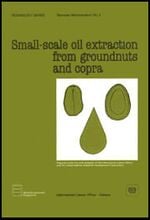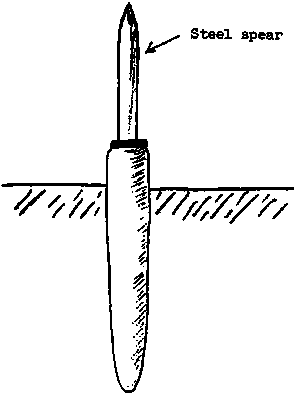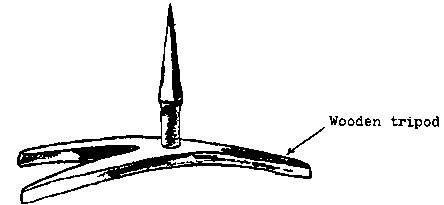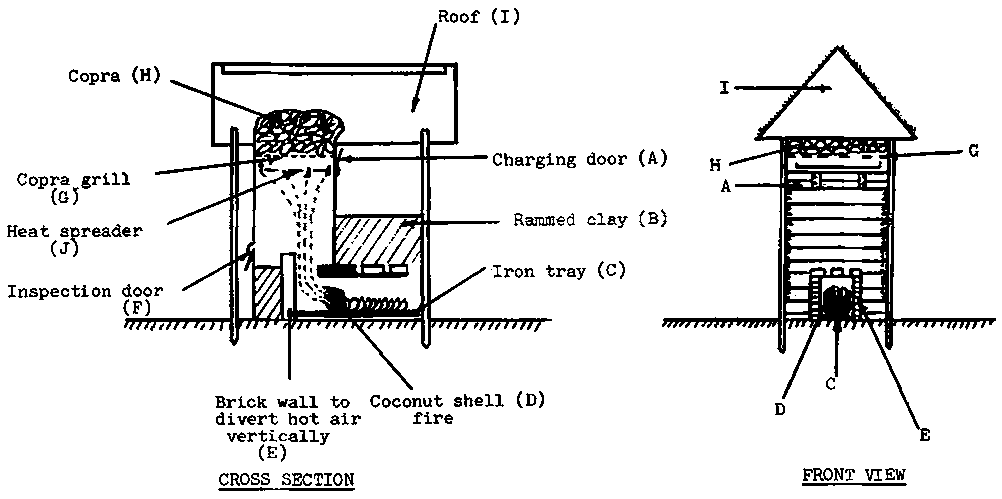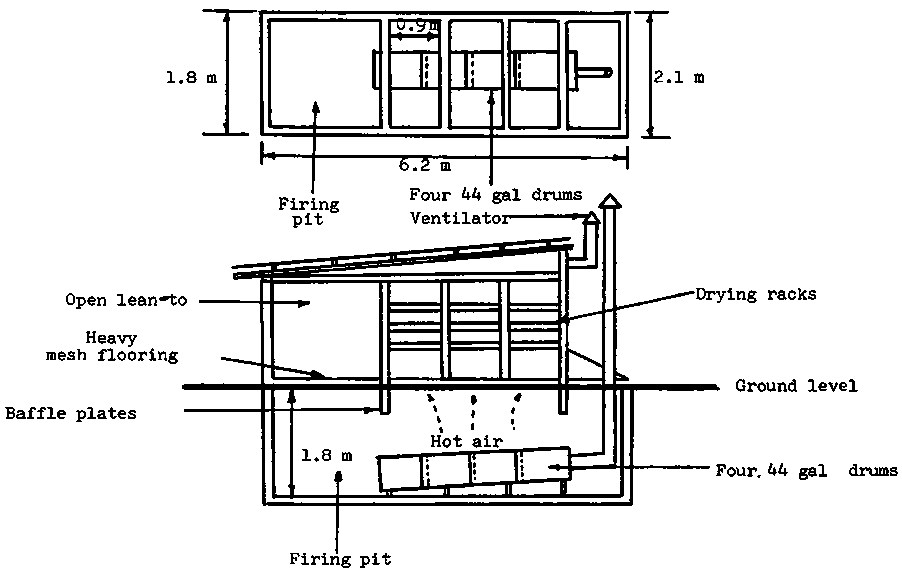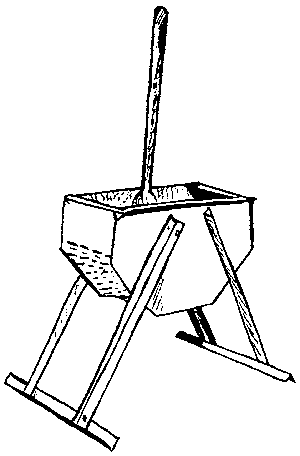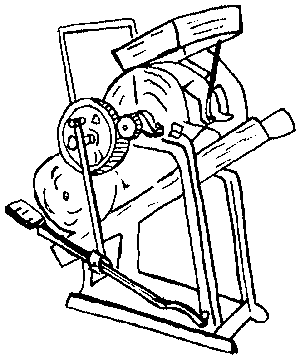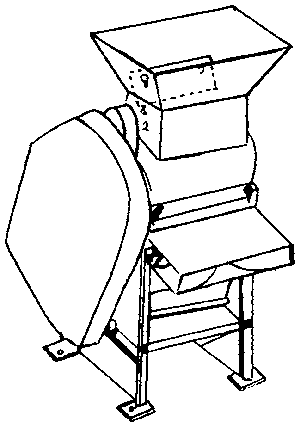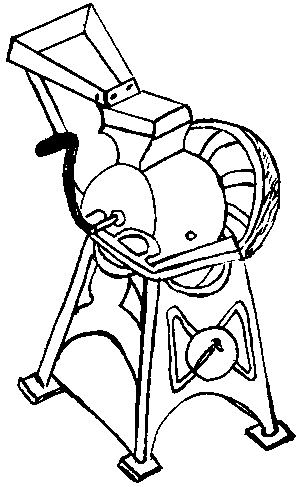Prior to describing the various oil-extraction techniques, it is necessary to consider the raw materials involved (i.e. copra and groundnuts) and the pre-processing operations. However, as this memorandum is mostly concerned with oil extraction, information on these operations will be limited. The reader is therefore advised to obtain additional information from available publications, some of which are indicated in the chapter and in the bibliography.
II.1. Raw materials[edit | edit source]
The two raw materials of concern Co this memorandum are copra and groundnuts. Copra is derived from coconuts. The derivation process is dealt with in the next section.
Coconuts and groundnuts are produced in developing countries mainly by small holders. Table 11.1 provides certain basic coefficients involved in the cultivation of coconuts and groundnuts, including the proportions of coir fibre, shells, coconut water, etc. per tonne of crude nuts.
II.1.1. Copra[edit | edit source]
Copra is available in two forms, namely, cup copra and ball copra. The preparation of cup copra is discussed in detail in the next section. Ball copra is obtained from mature unhusked nuts that have been stored in the shade for eight to 12 months. The nut water is gradually absorbed and the kernel dries up until it can be heard to rattle inside the shell when the nut is shaken. Husk and shell are then carefully removed. This copra is used for edible purposes. Table 11.2 provides the composition of the kernel from both mature coconuts and copra.
II.1.2. Groundnuts[edit | edit source]
Groundnuts are grown in tropical and subtropical climatic regions and warmer parts of temperate regions. It is a low-growing annual plant, between 30-60 cm high. The varieties of groundnuts fall into two groups depending on their characteristics:
(i) Bushy bunched types: this type matures in 3-4 months.
(ii) Runner or spreading type: this type matures in 4-6 months.
Table II.1
Basic coefficients1
1 The basic coefficients vary a great deal, depending on soil characteristics, growing conditions, rainfall, type of nut, etc.
|
Groundnuts | ||
|
Nuts |
14 000/ha2 |
N/A |
|
Nuts/tonne |
1 000 |
N/A |
|
Tonnes/ha (crude nuts) |
15 |
1 (higher with irrigation)3 |
|
Shelled nuts/ha (Fresh) |
5 250 kg |
700 kg |
|
Shelled nuts/ha (dry) |
2 550 kg |
670 kg |
|
Shelled nuts/tonne crude nuts (dry) |
170 kg |
670 kg |
|
Shelled nuts/tonne crude nuts (fresh) |
350 kg |
700 kg |
|
Coir fibre/tonne crude nuts |
150 kg |
N/A |
|
Coconut water/tonne crude nuts |
140 kg |
N/A |
|
Shells/tonne crude nuts |
150 kg |
300 kg |
|
Shells charcoal/tonne crude nuts |
45 kg |
40 kg |
|
Nuts in shell/tonne crude nuts |
640 kg |
1 000 kg |
|
Coir waste/tonne crude nuts |
210 kg |
N/A |
2 This is a high estimate corresponding to ideal conditions, with approximately 140 palm trees per ha and 100 nuts per tree. Under unfavourable conditions, the yield may be as low as 1,500 nuts per ha.
3 The yield varies greatly according to location and growing conditions. Obtained estimates range from 500 kg/ha (Africa) to 2 250 kg/ha (United States).
Table II.2
Composition of mature coconuts and copra1
1 Variable composition of kernels and copra depending on origin of fresh nuts and pre-processing conditions.
|
|
Percentage (wt) coconut kernel |
Percentage (wt) copra |
|
Oil |
35-40 (on a wet basis) |
60-70 |
|
Protein |
4-5 |
8-10 (crude protein) |
|
Moisture |
40-50 |
5-7 |
|
Carbohydrate |
5-10 |
10-13 |
|
Crude Fibre |
2-4 |
4-5 |
|
Ash |
1-1.5 |
1-2 |
Some intermediate hybrids do exist. The bunch type contains kernels that average 65-75 per cent of the whole nut. A good average yield, under suitable conditions, would be 1000-1350 kg/ha.
The major groundnut-producing countries are India, China, Nigeria, Senegal and the United States. While the major proportion of groundnuts is used for the production of vegetable oil, a fairly substantial amount of shelled nuts are used for direct human consumption either raw or roasted.
II.2 Pre-processing of coconuts[edit | edit source]
The pre-processing operations of coconuts are indicated in the flow chart below, and then briefly described in this section.
Harvesting Husking Shelling Drying Bagging Storage
II.2.1 Harvesting[edit | edit source]
Harvesting of coconuts can be achieved by two means: (i) allowing the nuts to fall naturally or, (ii) causing them to fall artificially. In the latter case, they may be picked manually or with a knife attached to a long bamboo pole. To obtain good quality copra, the nuts must be harvested fully ripe. A mature bunch of coconuts is usually ready for harvest every month. Therefore, ten to 12 harvests may be obtained each year.
II.2.2 Husking[edit | edit source]
(i) Manual husking
The first stage of coconut processing is the removal of the husk. The most prevalent method is a manual one. It involves the removing of the husk by impaling the coconut on a sharp iron or wooden spike fixed in the ground. The spike is usually set at a slight angle at about 80 cm from the ground. Using both hands, the operator brings the coconut down sharply on the edge of the spike which pierces the husk and glances off the round end of the nut. The fruit is then twisted, thus loosening the husk. This work is hard, and calls for considerable skill and great wrist and arm strength. An experienced worker can dehusk approximately 1500-2000 units per eight-hour day. Figure 11.1 shows two typical manual dehusking tools.
FIGURE II.1
Two types of manual dehusking tools
(a) This dehusking tool is used in Malaysia and Sri Lanka. The wooden base is driven into the ground. The upper spear is made out of steel.
(b) In other developing regions, a coulter mounted on a wooden tripod is used for husking.
(ii) Mechanical husking
In view of the rigour involved in husking by hand, a number of machines to husk coconuts mechanically have been devised. Up to now, none of these machines have been able to compete satisfactorily with the traditional method described above. However, in view of the ever increasing labour costs, a good deal of research is being conducted to evolve suitable equipment for mechanical husking.
II.2.3 Shelling[edit | edit source]
There are various techniques for shelling coconuts depending on the overall processing method. To produce copra, the shell of the dehusked coconut is cracked into two equal halves with a chopping knife or hatchet. Breaking should be carried out over a concrete floor sloping either to one side or to the centre so as to enable the draining of coconut water. A skilled worker can split up to 7000 nuts per day. The nut water should be drained completely by inverting the split nuts face downward for one to two hours, preferably in the sun, before the drying is started.
Once drainage has been completed, drying should be undertaken as soon as possible in order to avoid bacterial action and spoilage of the meat. The latter generally starts approximately four hours after shelling. Experiments on the rate of spoilage were undertaken in Malaysia. Estimated spoilage rates are shown in Table 11.3. It may be seen chat the percentage of white copra decreases from 82 per cent (no delay between shelling and drying) to 0 per cent after a 48-hour delay.
II.2.4 Drying[edit | edit source]
There are three main drying methods. These are:
- sun drying;
- smoke curing or drying over an open free in a direct drier or kiln; and
- indirect hot-air drying.
Frequently, a combination of preliminary sun drying followed by kiln drying is used. The selection of an appropriate technique would, of course, be largely influenced by local conditions. A recommended drying procedure would proceed as follows:
- The moisture content is first reduced from 55 per cent to 35 per cent within 24 hours;
- Over the next 24 hours the moisture content should be further reduced to 20 per cent;
- In the third 24-hour period the moisture content should be reduced to 5-6 per cent.
Table II.3
Effect of preliminary drying delays on the quality of copra
|
Experiment number (300 nuts per trial) |
Delay period before kiln drying |
Percentage white meat |
Percentage slightly discoloured or dirty meat |
Percentage red to red-black meat |
|
1 |
nil |
82 |
18 |
0 |
|
2 |
2 hours |
80 |
20 |
0 |
|
3 |
4 hours |
75 |
25 |
0 |
|
4 |
6 hours |
70 |
29 |
1 |
|
5 |
9 hours |
61 |
35 |
4 |
|
6 |
12 hours |
36 |
42 |
22 |
|
7 |
24 hours |
10 |
48 |
42 |
|
8 |
48 hours |
0 |
17 |
83 |
Source: Thampan, P.K.: The coconut palm and its products (Cochin, India, Green Villa Publishing House, 1975).
(a) Sun drying
The sun-drying process is very simple but is successful only when long periods of sunshine can be guaranteed. The process involves placing drained coconut halves on the ground with the open side turned to the sun. It is better, however, to first immerse the nut halves in clean, cold water to wash away any adhering material. This is done so as to prevent those materials from acting, later on, as a medium for the development of mould.
The nuts may be dried on simple and cheap racks, constructed of bamboo, in order to avoid contamination by laying them directly on the ground. Technically, the use of concrete floors is superior to both of the above methods. These will, however, require higher capital investments which may not always be justified from an economic point of view.
Depending on climatic conditions, the drying process may be completed within five to seven days. After the first two days of drying, the kernel or the meat gets detached from the shell and can be removed by means of a thin wooden lever. The detached kernels are set to dry again for a further period of four to five days. For best results, the drying period should not be discontinued. Table 11.4 provides estimates of the moisture content of copra at different times of the drying cycle.
The drying area should be covered with screens of bamboo and coconut fronds whenever it rains in order to prevent deterioration of the partly dried meat.
The drying of coconut meat during the monsoon period is particularly difficult and, unless it is carried out carefully, a large fraction of the copra may get mouldy or discoloured. Table 11.5 (based on experiments carried out in the Philippines) shows that the appearance of moulds is considerably retarded as the moisture content of copra is decreased.
TABLE II.4
Moisture content of copra during sun drying
|
Drying period |
Percentage moisture |
Drying period |
Percentage moisture |
|
0 |
50 |
2 days |
17 |
|
2 hours |
40 |
3 days |
12 |
|
4 hours |
35 |
4 days |
9 |
|
5 hours |
33 |
5 days |
7 |
|
8 hours |
28 |
6 days |
6 |
|
10 hours |
25 |
Source: Thampan, op. cit.
TABLE II.5
Relationship between moisture content of copra and mould appearance
|
Drying period |
Average temperature |
Average percentage moisture (wet) |
Mould appears after |
|
Fresh meat |
0 |
53 |
3 days |
|
1 day |
28.1°C |
26 |
7 days |
|
2 days |
28.4°C |
20 |
8 days |
|
3 days |
28.9°C |
10 |
13 days |
|
4 days |
29.0°C |
8 |
28 days |
|
5 days |
29.0°C |
4 |
Source: Thampan, op. cit.
(b) Direct hot-air drying kiln
In this form of drying, coconut meat is heated directly by the smoke and hot combustion of fuel gases. Crude kilns used for this type of drying yield an inferior, heavily smoked, product. Consequently, the produced oil and cake are also of poor quality. There are, however, certain kilns that can be employed very satisfactorily. An FAO Agricultural Development Paper1 considers a few direct and indirect hot-air kilns. One of each type of the above kilns is described in this section.
1 FAO Coconut palm products - their processing in developing countries, FAO Agricultural Development Paper No. 99 (Rome, 1975).
The FAO paper provides the following description of the direct hot-air drying kiln:2
2 ibid., pp. 59-61.
This miniature kiln, designed in Malaysia for use on smallholding varying in size between 0.7 and 4 ha is able to dry 100 coconuts and yield crisp, white, undistorted, and uniformly dried copra in fifteen hours (See fig. 11.2).
High ground is selected for the site of the kiln, which is a rectangular wooden chamber 1.8 m high and open at the top. A tunnel leading into the base of this chamber forms the hearth in which a single chain of coconut shells is burnt continuously. The overall area of chamber and tunnel is 2.1 m * 0.9 m, and it is sheltered by an at tap roof.
In the chamber the meat is dried on a platform of spaced nibong slats (the palm Oncosperma filamentosum) covered with chicken wire and placed horizontally within the chamber, 1.5 m above ground level. About 7-8 cm beneath this platform there is a heat-spreader, supported horizontally by wire. This piece of iron is perforated with holes. The base of the chamber is filled to a height of about 0.5 m with rammed clay, leaving a hole in the centre which is lined with loose bricks, through which the hot gases emerge from the tunnel. A drop shutter is provided at the top of the chamber, so that the meat may be easily inserted or removed and the heat spreader may be cleaned when necessary. There is also an inspection door about 45 cm above ground level for cleaning the clay base of the chamber.
Figure II.2 - MALAYSIAN TEN-ACRE KILN (COOKE TYPE)
The fire tunnel consists of two walls of loose bricks laid along the ground and leaning into the base of the chamber. These walls, each six bricks high, are laid 30 cm apart, and the space between them is covered by a stout sheet of iron, 1.8 m long and 46 cm wide, anchored in position by bricks laid along the edges and by rammed clay where it joins the base of the kiln. The bottom line of bricks is spaced so as to allow air to filter to the fire.
To operate the kiln, clean, dry coconut shells of even size are interlocked and laid loosely in a single line on a sheet iron tray, 1.5 m long and about 20 cm wide, outside the kiln. The hollow end of the row is lit, using scrap rubber or kerosene to assist combustion. When the shells are well lit and burning without smoke, the tray is slid as far into the tunnel as it will go, the burning end entering first. Thus, the shells burn from the centre outward against the incoming current of air. This keeps the flame small and reduces the rate of combustion. If the shells were burned in the opposite direction, the draught would cause all of them to ignite simultaneously, thus spoiling the meat and possibly also destroying the kiln. It should be noted that if the tunnel is too small in cross section, the induced draught is so great that the fire burns with difficulty and gives a smoky flame.
When the fire is nearly out and beginning to smoke, the tray is withdrawn and reloaded with a fresh supply of shell fuel, and just before this second fire is finished, the meat is turned over. Subsequently, three more fires are lit in succession until the meat is dry and ready for shelling.
The following can be said about the efficiency of this type. A single line of shells 1.5 m long is made up of about 40 pieces (halves) of shell and lasts about three hours. Thus a total of 200 pieces are used to fuel the kiln five times, which means that all the shells obtained from one lot of 100 coconuts are consumed in the subsequent run. It follows that with such rapid drying the heat efficiency of the kiln tends to be low, but this does not matter so long as sufficient fuel is produced to meet the requirements of firing.
The drying time is remarkably short, and although the fires need fairly frequent attention when in operation, intervals may safely be left between fires when the copra is nearly dry without causing deterioration. Once a supply of dry shell fuel is available and the kiln and ground have dried out, copra of estate quality should be obtained irrespective of weather conditions. Properly operated there is little fire risk. If the poles and woodwork are initially and periodically treated with creosote, a life of over two years may reasonably be anticipated, but the attap should be renewed yearly.
In a year of 150 working days, this kiln will produce about 3700 kg of copra. When the kiln is shared by two or more smallholders, it can be operated more economically.
A modified Malaysian kiln has been developed in India. It is particularly recommended for small coconut holdings. The kiln can dry 200 nuts (400 cups) at a time in approximately 34 hours. It is relatively inexpensive and may be afforded by most producers. Except for a slight smoky smell, good quality copra can be produced from this kiln.
(c) Indirect hot-air drying
In indirect hot-air driers the coconut meat does not come into contact with combustion gases and smoke from the fuel and hence the name of this drying method. The copra thus obtained is usually of a very high quality. However, unless the method of heat exchange is efficient, there is a considerable loss of heat.
The FAO paper mentioned earlier provides a description of an indirect hot-air drier known as the modified Tonga hot-air drier. These driers are cheap and easy to build. They enable pre-drying of copra in the husk with hot air, while the upper trays of the drying chamber may be used to dry cut-out copra. Thus, pre-drying is no longer dependent on the sun. Following is a description of these driers as provided in the FAO paper:1
1 FAO, op. cit., pp. 85-88.
The flooring of the drying chamber is made of heavy 5-cm wire mesh (see figure 11.3). After firing and when the drier is sufficiently hot the whole nuts are split in half and stacked in the chamber the first layer face up and the remainder face down.
Figure 11.3 - TONGA HOT-AIR DRYER
Note: Brick and metal plate in firing box can be used instead of drums
Predrying is carried out for twelve hours. Next morning the half nuts are removed and the meat is cut out and put into the trays above for further drying. For conservation of shipping space it is important that the half nuts be cut into two or three pieces, but not more than four. Drying is usually done during daylight hours only - the furnace being stocked up in the morning and kept going all day, but left to go cold overnight. After this drying stage, usually for two days, the copra is taken out of the drier and spread out in the sun for two or three days more. A number of producers keep stoking at less heat after the first two days for a further day or two for complete drying. This saves final sun drying, particularly during bad weather.
Specifications
The pit is 1.8 m wide and 5.5 m long. The walls can be left bare, but it is preferable to use old sheet iron as lining to keep earth from falling into the pit.
Furnace and heating chamber
Four 44-gal drums are used, the ends of which are let in about 15-23 cm to make a single chamber. At ground level 10 * 5 cm local timbers are used as plates around the pit.
Drying chamber
The drying chamber is built of local timber directly over the heating chamber. The flooring at ground level is heavy 5 cm wire mesh, which will support half nuts in husk. The upper portion has three compartments, each with five racks carrying 1.25 mm2 wire-mesh trays measuring 1.8 * 0.9 m - a total of fifteen trays in all. Trays can be made smaller (0.9 m square) with two trays in each rack for easier handling. Three hinged doors on one side are used for charging and discharging husks and trays. The walls and doors are made from empty drums.
The chamber has a capacity of 800 nuts per drying - that is, 150-250 kg of dry copra. The required drying times are twelve hours of predrying, twenty four hours of drying after cutting the copra out of the husks, and finally two days of sun drying or, alternatively, thirty-six hours of kiln drying.
Pattern of drying
As long as the drier is in operation the lower chamber of predrying in the husk can be filled and discharged while the upper trays are in use. Since normally the capacity of the top trays with cut-out copra will be about two or three times that of the lower chamber filled with husks, after discharging the predried copra the upper chamber should again be filled for predrying while the first batch of predried half nuts is being cut out and placed in the top trays. After the second batch has been predried and cut out, both batches are finally dried in the drying trays. The number of batches that are predried depends, of course, on the number of nuts to be dried.
The most important part of drying is the quick application of heat after the nuts are split. The furnace should therefore be stocked prior to splitting and the half nuts be put into the heated drying chamber as soon as possible.
Importance of sufficient heat
When predrying in the husk, the hot, moist air passing through the newly stacked husks will be fairly cool on reaching the cut-out, partly dried copra in the upper racks and will condense. This will not be the case, however, if the furnace has been fired and the heating chamber sufficiently heated prior to stacking the half nuts in the husk in the drier. It is therefore important to fire the furnace and heat the drier about an hour prior to stacking husks for predrying.
A number of indirect hot-air drying kilns have been developed in a number of countries, including the Pearson’s patented kiln, the "kukum" hot-air drier, the "Chula copra drier", the Seychelles Calirif�re, or the oil-fired hot-air drier marketed by M/S Premier Engineering Company at Cochin (India). These driers are particularly suited for specific scales of production ranging from approximately 500 nuts per load (the kukum drier) to 20,000 nuts per load (the Cochin drier). It is reported that the Chula copra drier (5,000 nuts/load/24 hours) produces copra of excellent quality which fetches a premium over ordinary copra.
The selection of a copra drier is a function of the adopted scale of production, price incentives for good quality copra and the financial means of the producer. Efficient driers are generally used by large-scale processors which can afford the high capital costs. On the other hand, small-scale producers tend to use traditional methods (e.g. sun drying in combination with direct hot-air drying) which are not always efficient from a quality point of view. Improved kilns have been promoted in a number of countries (e.g. India) but have not been widely adopted owing to the relatively high capital costs and the lack of price incentives for good quality copra. Thus, the widespread adoption of improved kilns by small-scale producers will require a differential pricing system for copra which benefits both the copra producer and the buyer (e.g. the middlemen or oil producer).
It may be noted that the quality of copra is determined by a number of factors in addition to the adopted drying technology. In particular, the oil content of copra and/or the oil extraction rate vary according to the variety of coconut processed (e.g. the copra of dwarf palms is soft and rubbery unlike that of the ordinary tall variety), its degree of ripeness, and growing conditions. The physical characteristics of copra which affect the oil quality and the extraction rate include the rubberiness of the meat, case hardening which results from inadequate drying in kilns and hot-air dryers, or charring of the meat from over-heating. Case hardening may be avoided by controlled drying of the copra cups: the temperature should not exceed 70°C during the early drying stage (e.g. the first eight hours of drying), and should then be maintained between 50°C and 60°C during the remaining drying stages. The charring of the meat should not happen either, if the above drying procedure were to be adhered to.
As the focus of this memorandum is oil extraction rather than the drying of oil seeds, no further detailed information will be provided on drying techniques. However, interested readers may obtain detailed information on a large number of copra driers used in a number of Asian countries from the following publication:
UNIDO Coconut Processing Information Documents, Part 1 of 7, Coconut harvesting and copra production (Vienna, 1980), limited distribution.
The above publication provides a detailed description of 30 different driers used in Indonesia, Thailand, the Philippines, Malaysia, Micronesia, the Solomon Islands and Sri Lanka, including the design and operation of the kilns, construction methods, fuel and labour requirements, drying schedules, etc.
II.2.5 Bagging[edit | edit source]
Bagging is an optional operation. It is normally not done at small scales of production. If, however, bagging were to be done at this level, it would involve manual methods using jute bags.
II.2.6 Storage[edit | edit source]
Important points to be remembered with respect to the storage of copra are:
(i) wet copra should, as far as possible, not be stored with dry copra;
(ii) the storage structure should be constructed so as to minimise fluctuations in the storage climatic conditions. For example, a non-reflective metal roof which admits heat radiation to the store can be dramatically improved by painting the upper surface with a mat-white reflective paint. This can reduce temperature fluctuations in the store by 10 C or more, thus preventing serious condensation effects.
(iii) The walls and floors should be smooth for easy cleaning. Cracks and crevices in the structure must be regularly cleaned out and filled with mortar to eliminate insect and rodent problems.
(iv) Bagged copra should not be stored directly against walls: wooden dunnage should be provided to raise the stack off the floor.
Careful storage of copra will minimise the development of moulds which may lead to important losses of oil and an increase in the free fatty acid content of the meat. Five main types of moulds may develop depending on the relative humidity level and the temperature in the storage area. The most damaging mould is known as the "brown mould". It flourishes in copra with a moisture range of 8 per cent to 12 per cent and may be responsible for oil losses of more than 40 per cent. The least damaging mould is known as the "green mould": its growth is entirely superficial and does not result in significant oil losses.
In order to avoid the development of moulds, it is recommended to pro-dry copra in the sun for one to two days prior to storage with a view to reducing moisture to a safe 6 per cent to 7 per cent. This practice is usually adopted by a number of milling establishments in India. Relative humidity in the storage area should not exceed 85 per cent at room temperature or 95 per cent at 40°C.
II.3. Pre-processing of groundnuts[edit | edit source]
The pre-processing operations of groundnuts include, in the following order, harvesting, field drying, shelling, bagging and storage. These operations are briefly described below.
II.3.1. Harvesting[edit | edit source]
The timing of the peanut harvest is critical since it can greatly affect the yields and nut quality. As harvest time approaches, the peanuts should be inspected every day or two to determine the best date for digging. While the type, variety and planting date may be used as rough guides for determine the harvesting date, the best way to judge the maturity of the plant is to examine the pod itself. The crop is ready to harvest if the majority of the kernels are fully developed and take on a mature colour. Harvesting consists of either digging or pulling up the plants manually or using mechanised means such as a digger or southern plough.
II.3.2. Field drying[edit | edit source]
After the groundnuts have been harvested, they are inverted and placed in windrows in the field. The groundnuts are left to dry for about two weeks. During this period, the moisture content of the pods is reduced to about 10 per cent. In humid areas, the pods are sometimes picked off first and dried on mats so that they can be stacked or covered in the event of rain.
II.3.3. Shelling[edit | edit source]
Removing the kernels from the pods is generally referred to as shelling or "decorticating". This is usually carried out on the farm just before the farmer sells his produce for the following tow reasons: (i) kernels do not store as well as nuts in the shell and (ii) groundnuts in the shell are 50 per cent heavier than kernels alone and are therefore costlier to transport.
On smallholdings, groundnuts are shelled manually. This is a laborious and labour-intensive operation. Fortunately, a number of simple hand-operated decorticators are now available. These decorticators can be fitted with a simple feeder to improve the performance of hand-operated groundnut shellers.1
1 A simple feeder made from steel is described in a Tropical Products Institute Publication (TPI: A feeder to improve the performance of a hand-operated groundnut sheller. Rural Technology Guide No. 4 (London, 1977)). The feeder consists of a large hopper with a cup valve in the base which drops a controlled quantity of nuts into the ball of the machine with each movement of the operating handle. Thus, as the number of nuts in the machine is kept small, the effort to operate the machine is lower than normal. The use of a hopper also results in less damage to the individual kernels.
An improved decorticator involves the shelling of peanuts in a drum-shaped device with heavy, curved grates forming the lower half of the drum, and a revolving beater inside the drum which crushes the pods against the ridges in the grates. The clearance is sufficient to avoid injuring the peanut kernels when the shell is crushed. Peanuts and broken shells drop through the openings in the grates, and the shells are siphoned off by air suction. After the peanuts are shelled, the kernels are passed over oscillating shaker screens and separators where foreign material, undersize kernels, unshelled peanuts and split kernels are removed. On completion of this operation, the kernels are placed on a conveyor belt where defective kernels and any remaining foreign material can be removed by hand.
A number of groundnut shellers are available for various scales of production and powered by various means (manual, diesel engines, electric motors). Some of these shellers are illustrated and described in figure II.4.
Investment costs, energy costs, labour cots and productivity levels should be carefully analysed when choosing among alternative types of shellers. The repair and maintenance of the latter should also be taken into consideration as they do add to shelling costs and may disrupt shelling activities.
II.3.4. Bagging[edit | edit source]
This operation, as with copra bagging, is optional in small-scale production. If this stage is deemed necessary, manual methods of bagging using jute bags would be the most appropriate.
FIGURE 11.4
Different types of groundnut shelters
GROUNDNUT SHELLER
Manufactured by:
Agrimal (Malawi) Ltd.,
P.O. Box 145,
Blantyre, Malawi
The Agrimal groundnut shelter is a reciprocating decorticator equipped with inter-changeable screens for groundnuts of different size.
|
Price: |
(as at 1.4.80) 105.00 kwacha (.00) |
|
Source: |
Commonwealth Secretariat: |
Fig. II.4 (a)
FOOT OPERATED GROUNDNUT SHELLER
Manufactured by:
Hindsons Pvt. Ltd,
The Lower Mall, Patiala,
Punjab,
India
Fitted with a flywheel for easier operation and with a blower to separate the shells from the kernels
The machine can be operated and fee by one person and can shell 200 kg in an eight-hour day.
|
Source: |
ITDG: A buyer’s guide to low-cost agricultural implements. |
Fig. II.4 (b)
AUTOMATIC GROUNDNUT DECORTICATING MACHINES
Manufactured by:
Harrap, Wilkinson Ltd.,
North Phoebe Street,
Salford M5 4EA,
United Kingdom
Operation
The hopper at the top of the machine is filled with nuts to be shelled. A ribbed feed roller feeds the nuts into the beater chamber where they are struck by rotating flexible beaters. The broken shells and the kernels are forced out through the perforated cylindrical steel shelling screen (available in three sizes). The kernels and broken shells fall into a duct which has a wire-mesh delivery chute at its lower end. A fan blows the shells upward and out of the shell outlet spout.
The work capacity of this machine can be varied by adjustment of the hopper flap. The maximum and minimum rates are given below:
|
No. 2 machine: |
52 to 504 kg/h; 1.5 hp |
|
No. 3 machine: |
254 to 406 kg/h; 2 hp |
Source: ITDG, op.cit.
Fig. II.4 (c)
HAND OPERATED GROUNDNUT DECORTICATOR
Manufactured by:
Dandekar Brothers,
Sangli,
Maharashtra,
India
Source: ITDG, op.cit.
Fig. II.4 (d)
II.3.5. Storage[edit | edit source]
The following conditions should be attained, as far as possible, to successfully store groundnuts:
(i) Tests have indicated that the storage life of groundnuts begins in the field. Therefore, the nuts should have a high initial quality. The ill effects of improper storage, it must be remembered, are cumulative and irreversible.
(ii) The temperature in the storage should be low. Table 11.6 shows the relationship between temperature and the length of time the nut retains its edible quality.
(iii) The relative humidity should be between 65-70 per cent. Above 70 per cent, the nuts are likely to grow mould. Below 65 per cent, the nuts lose weight, become brittle and may split during handling.
(iv) The atmosphere in the storage area should be free of odours and well aerated, because nuts readily absorb odours and flavors from the surroundings.
Table II.6:
Relationship between temperature and storage time of groundnuts
|
Temperature |
Time of retaining edible quality | |
|
Unshelled nuts |
Shelled nuts | |
|
70°F (21.10C) |
6 months |
4 months |
|
47°F (8.33°C) |
9 months |
6 months |
|
32°F (0°C) |
3 years |
2 years |
|
25°F (-3.9°C) |
7-8 years |
5 years |
|
10°F (-12.2°C) |
15 years |
10 years |
